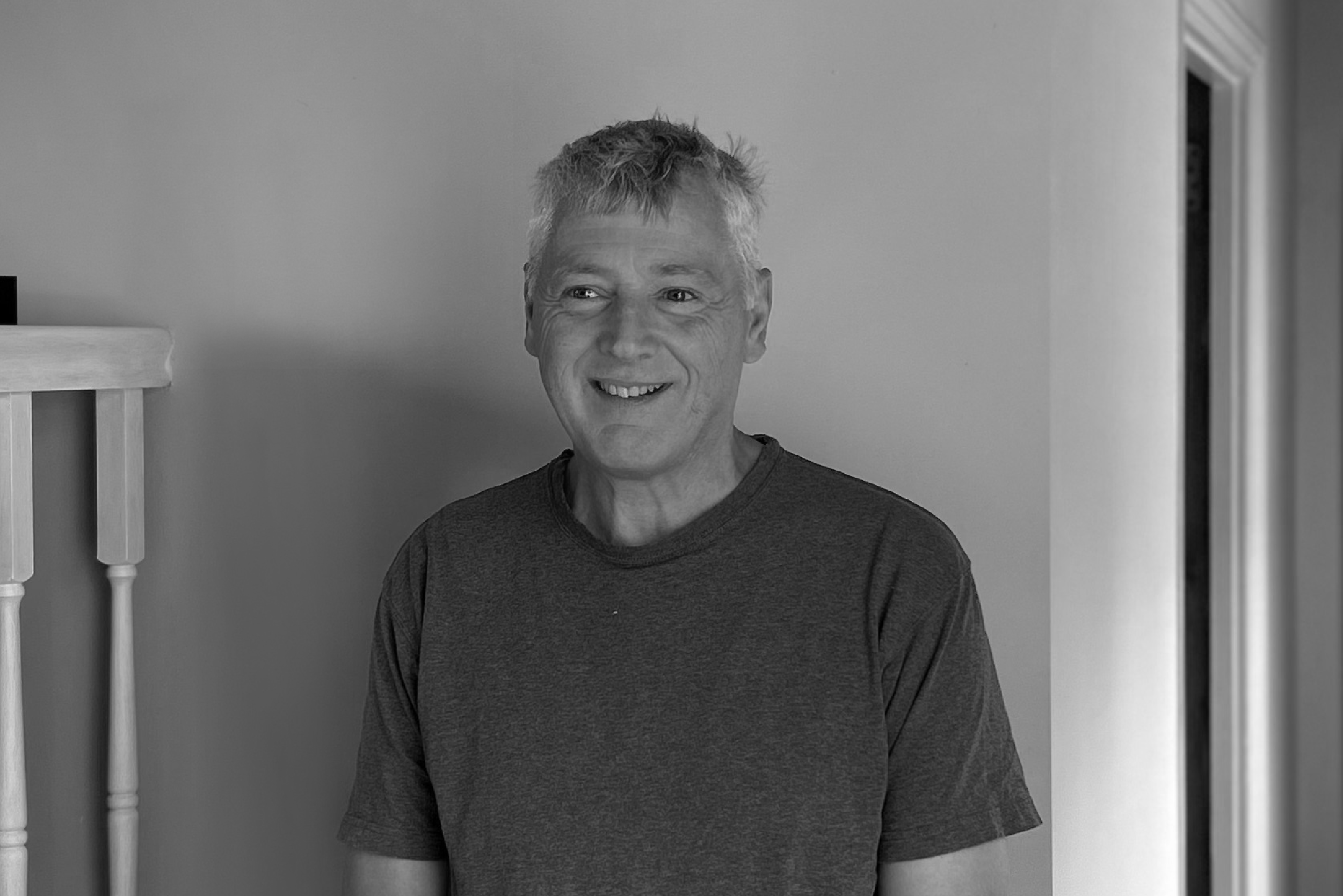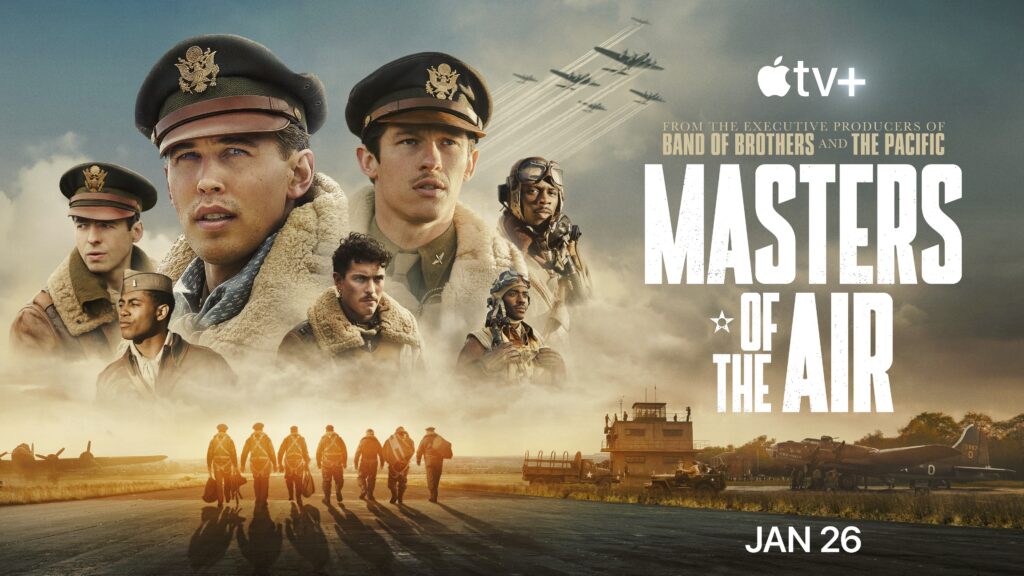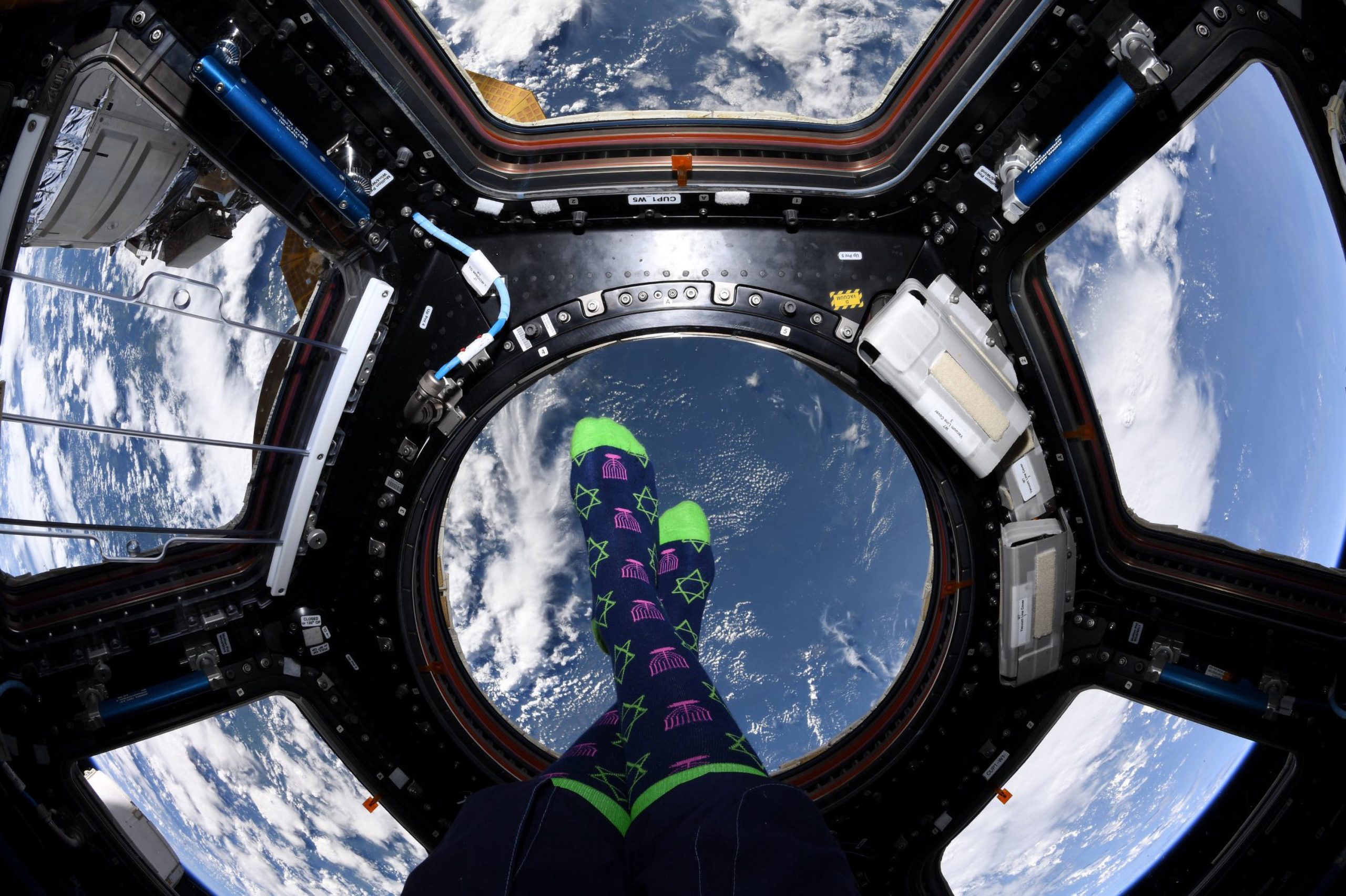
Production designer Chris Seagers discusses designing the sets for Masters of the Air in a way that would maximize the most use.
Developed for TV by John Orloff from Donald L. Miller’s book, Masters of the Air follows the aforementioned Band of Brothers and The Pacific. Where those series followed the action on the ground in Europe and the Pacific theaters, this one follows the air campaign in the years preceding D-Day. Austin Butler and Callum Turner lead a cast that includes Anthony Boyle, Nate Mann, Barry Keoghan, Bel Powley, Rafferty Law, Jonas Moore, Matt Gavan, Branden Cook, Ncuti Gatwa, Elliot Warren, Joanna Kulig, Edward Ashley, and Josiah Cross. Tom Hanks, Gary Goetzman, and Steven Spielberg serve as executive producers. Darryl Frank, Justin Falvey, Steve Shareshian, John Orloff, David Coatsworth, and Graham Yost co-executive produce the series.
All episodes of Masters of the Air and companion documentary The Bloody Hundredth are available to stream on Apple TV+.
It’s so nice to meet you today. How are you doing?
Chris Seagers: Good, thank you. Good.
Masters of the Air is one of the best limited series that I’ve watched in years. How did you first become attached to working on the project?
Seagers: I don’t know. I met David Coatsworth, who was one of the producers, who introduced me to Gary and the guys. It wasn’t the usual way of doing it. There wasn’t like, there was a roundy rounds. It was just suddenly, this happened. I don’t actually really know how I got on into it. I just ended up doing it, which was fantastic. We always knew it was going to be—it’s funny because I was just writing something for somebody other day. I was just saying that it was one of those things where you were reading the scripts and it was one of those things where you sort of say, how the hell are we going to do this?
I’d worked with the designer who did Band of Brothers and a number of things, Tony Pratt. I know how Tony worked. Tony worked a lot on those kinds of things with with Playtone and Amblin so he worked in a very particular way. I knew that there must have been a—he would do things in a certain way and it was getting value out of the sets so you could reuse things multiple times. That’s something that, working with Tony Pratt, you learned how to do. We end up doing the same thing again. I felt quite pleased with myself afterwards because I used to say to do, how would Tony do this?
Did it feel like fate or destiny since you grew up playing on the same airfields?
Seagers: Well, it is interesting because I did grow up in that area so I did know the area and we do have farming family that lived very, very close that were literally next door to the airfield. The original airfield, not the one that we used where we recreated it, but the original one. There was a certain amount—I knew because I grew up at the back end of that. I was born in the late fifties. When we were kids, they were still very much around, and we used to play in them.
Is it more challenging to recreate buildings that actually existed compared to working on, say, a fictional story where you’re just going with what the script says?
Seagers: Well, they both bring different challenges, really. We always said on Masters of the Air that it’s a little bit like The Crown, when they did those early Crown ones. I think the reason why they worked so well is because it was historically correct. Although we say that, there was a little bit of a license but you bent over backwards to try and keep it so that it was correct. You need certain things in order to—you always bend the rules but if you start with your feet on the ground, I think that it’s much easier to portray that.
How helpful was the museum at Thorpe Abbots when it came to finding materials?
Seagers: Very, very helpful. They were incredible, actually. We went up there a number of times. We’re all very digital and because of the nature of how we work, we have asset managers so we end up—everything is categorized, has names, it’s all filed specifically. We went to the museum, and there were just these endless file cabinets full of black and white pictures in folders with no real cross-referencing so we spent days and days going. We always said that we need to come back and organize you because they had so much stuff. It was incredible.
Did that ever happen?
Seagers: No. (Laughs) Sadly.
When it came to design work, how often are you ever thinking about what the cinematographer and what they have to do?
Seagers: I work very closely with the cinematographer. I always say I can build the best thing in the world but if there’s no light on it, you can’t see it. It’s really, really important, and it’s how you’re going to light it and there’s an awful lot to it—especially on something like this when we were mixing blue light with yellow—warm—light and there was a whole mixture of stuff. Again, we pushed it a little bit because they didn’t have fluorescent tubes, technically, but we wanted to add that in to give it that mix of that cold light. I think it actually worked, especially, in the equipment room, where they go to get all their equipment. That’s mixing light together and also light coming in from the windows. Also, because we built all the interiors of the camp itself on this back lot, we were arranging everything so that we could get light through the windows but we always had real backgrounds outside the windows.
There are multiple DPs working on the episodes. What was that like?
Seagers: That was interesting. That was fun, because with DP’s, they all want to bring their spin. It was good that they were all very, very respectful to Adam, the way Adam set it all up. But fortunately, what happened was, as you’ll see as we go, as we change DP and directors, the nature of the story changes as well. There are very definite boundaries and changes. You can keep the essence of what we’ve done before but they were adding in their own twist.
Yeah. I binged the series back in January when Apple had all the screeners—well, Apple had the screeners available earlier—but Friday I was like, three episodes, because I’m Shomer Shabbos so I knew I’d be offline for Shabbos. Saturday was going to be another three episodes and that ended up being six episodes and finishing the series.
Seagers: I’ve not seen the back end yet at all but I know when we were shooting it, when we get into the prison camp, there’s a very change in the look because it’s cold, it’s wet, it’s miserable. I know Dee wanted to bring a whole different look to it. When Tim takes over at the end, again, that just takes a whole—we ramp everything up going towards the end of the war.
Speaking of the prison camps, when you were working on the design work for that, were you watching The Great Escape at all?
Seagers: Well, interestingly enough, The Great Escape was built by one of the people that built the original camps and we did use all of that. We did look at all the research for that because, again, we wanted it to be right. But also, we didn’t have the money. We could only build four huts, but the huts were huge so we built a corner of the camp, but we had to use those huts multiple times for multiple prison camps. It was turning them all around into different ones because when they first go there in episode six, that’s one camp and then they’re there for a while. When Tim takes over, they go on the march and they go on to various other camps. I knew when we built it that we were going to have to get multiple layers out of it. I think we got something like five camps out of that one camp. Although it was an enormous outlay at the beginning, I think it amortized out well. But also, with a lot of help from CG as well for all the wide shots, obviously.

Was the stalag set reused for the concentration camp or was that entirely different set altogether?
Seagers: No, no, they were all the same place.
The concentration camp scene itself was definitely a powerful moment, at least when I was watching.
Seagers: We built it in a way that we knew we had to get that tower in at some point so we left a spot for that so we could drop that in later. We dropped that in for the last episode.
Did the pandemic have any particular impact on your work for the series?
Seagers: Yeah, it just lengthened it a little bit, by a few months, probably. I don’t know exactly how long we went over but we lost day. I think we only stopped for about six weeks right at the beginning, when nobody really knew what was going on. The decision was made to carry on, but every time somebody got sick, your whole department would just shut down. We had to try and do all these workarounds. Also, in construction, if you’ve got a construction crew of 80 people and one goes down, it normally takes 20 or 30 people out with them so there was a lot of that going on.
How did your experience working on Masters of the Air compare with that of Saving Private Ryan?
Seagers: Well, it was 20 odd years apart so it was very, very different in that with CG and all. Also, the same special effects designer was the same guy who did Private Ryan. I’ve worked with Neil many, many times, and it’s what Neil brings now. I think the special effects now, it’s so technology-driven. What they were doing with the planes and the gimbals and the shots—when you saw these rigs, they looked like spaceships. They weren’t airplanes because of the way the shrapnel was coming through the walls. All that was real, a lot of that—because Harry wanted to have shrapnel coming through and then the light follows it through. To get all of that coordinating was immensely complicated. And then, repeat, repeat, repeat.
As far as production design work in general, is AI going to have any impact on that in the future or is it going to be something that production designers utilize it as a tool?
Seagers: I don’t really know. We’ve been talking about it quite a lot, especially in the concepting. My take is like everything: if you’re good at what you do, you’ll be fine. It’s the ones at the tail end. You’ve got to up your game and you’ve got to either be able to embrace that technology and then use it and augment it to make things better. You’re not going to be able to sit back and just wait because it’s going to overtake.
I’ve got some guys who work with me, who are some of the best concept guys—because we’ve been having this slow period because of the strike, all they’ve been doing is playing around with all this new software. Some of the stuff that they’ve been sending me is quite—you were getting the same stuff before but they can get there faster now and that’s going to be interesting because concepting is expensive. I doubt it’s going to get any cheaper but it’s going to be interesting to see where it’s going to—those guys are worth their weight in gold because you can dream anything up you want, but you’ve got to sell it. My gut feeling is what would have taken—normally, you’ll give a concept artist—if you’re working on some really original stuff—you might have four to six weeks to get in and start producing some stuff. I suspect that time will get shorter.
How did you first get an interest in becoming a production designer?
Seagers: Well, I started in graphics, and it is a long time ago now. One of the guys that was doing life drawing classes, he had just retired from the BBC. He was promoting a 3D film course and he needed six students to go with him in order to start this course. I put my hand up and I went. I actually never finished it because a friend of mine, who left a year earlier than me, he was working at BBC, and he called me one Easter and said, they’re looking for people. I got the job and just left and I didn’t finish. That’s how I got into it. I was with the BBC for about seven, seven years.
It was so nice to meet you and congrats again on your work on the series.
Seagers: Thank you. Pleasure.
All episodes of Masters of the Air are available to stream on Apple TV+.
Please subscribe to Solzy at the Movies on Buttondown.







